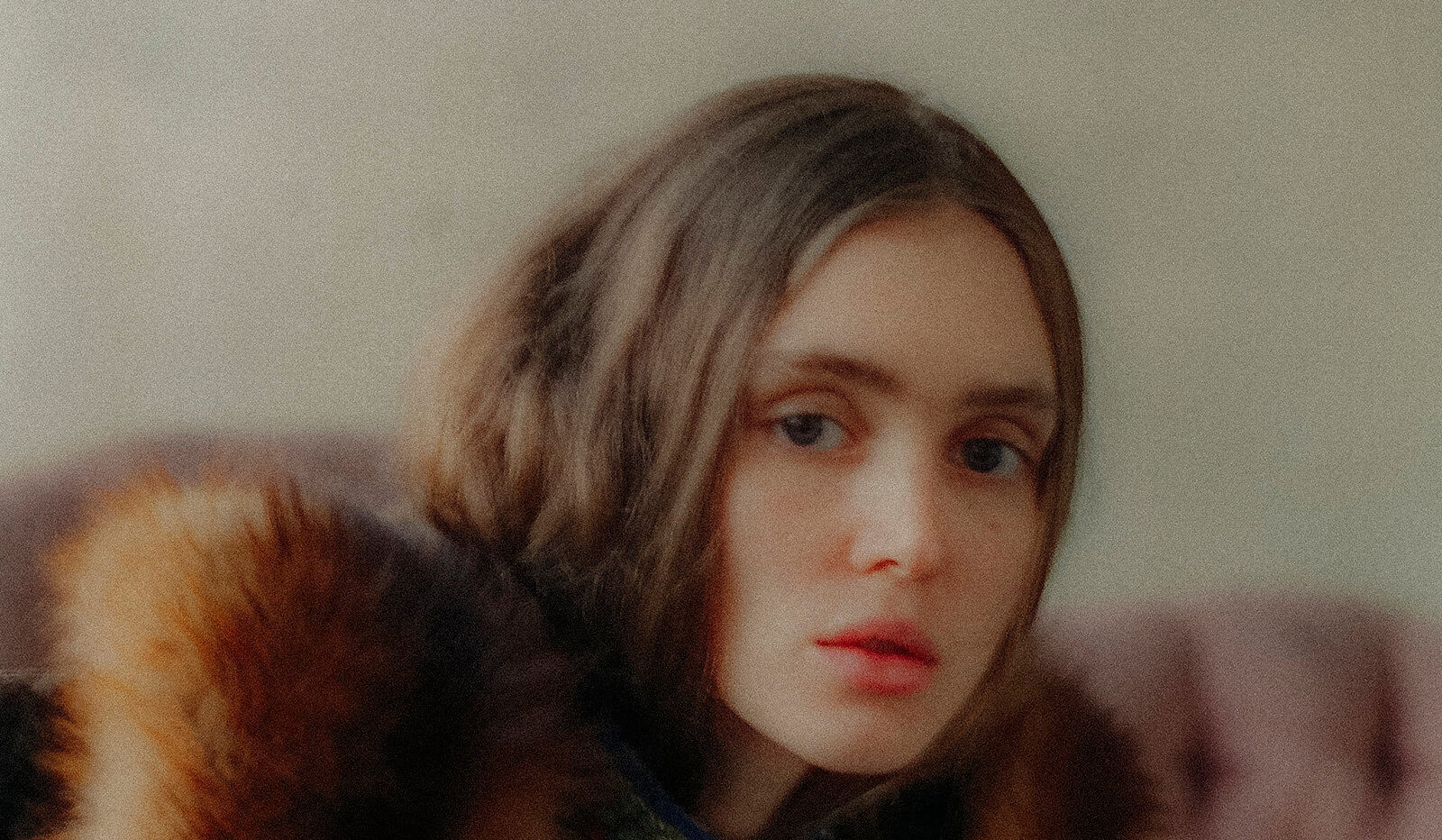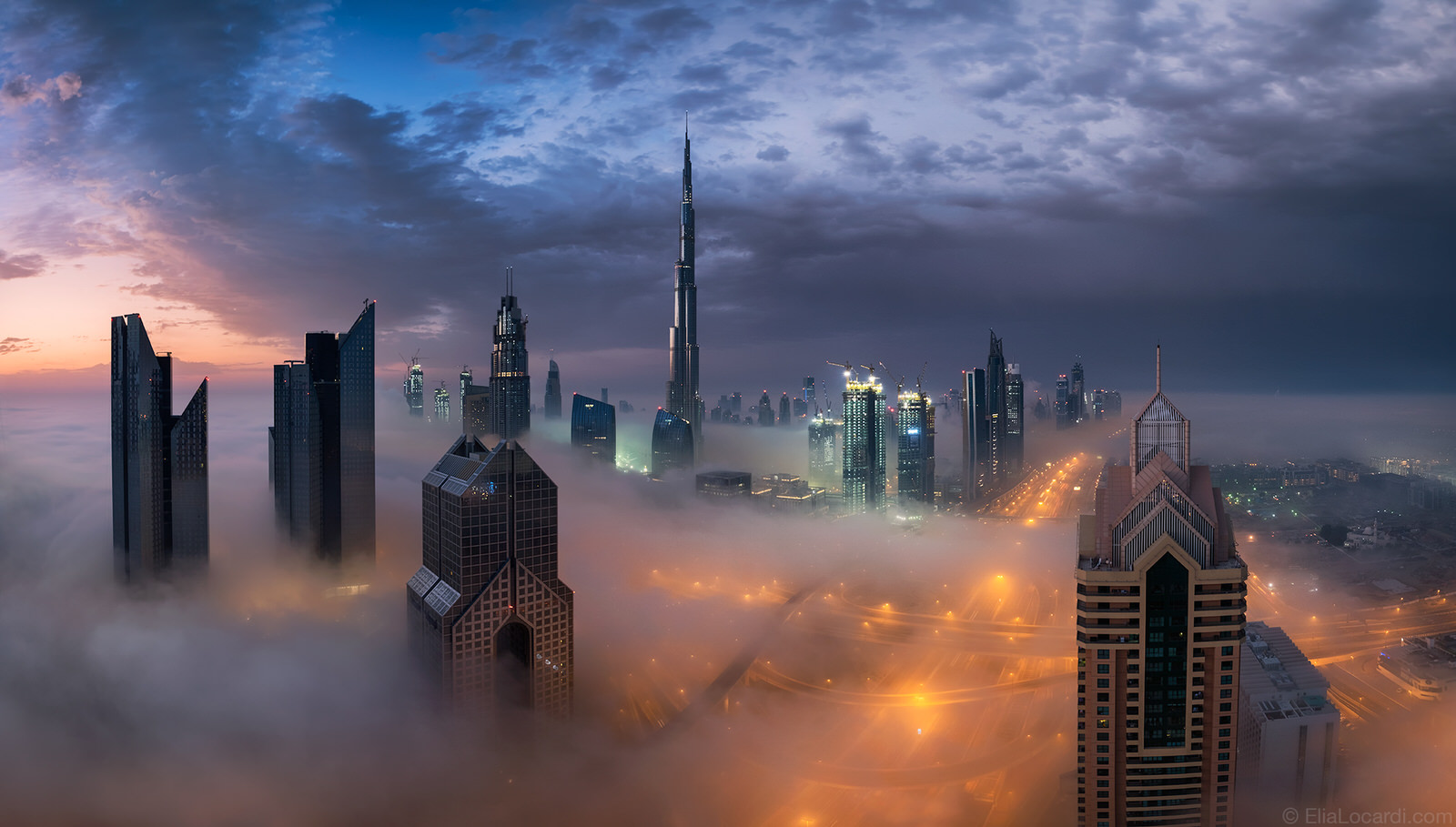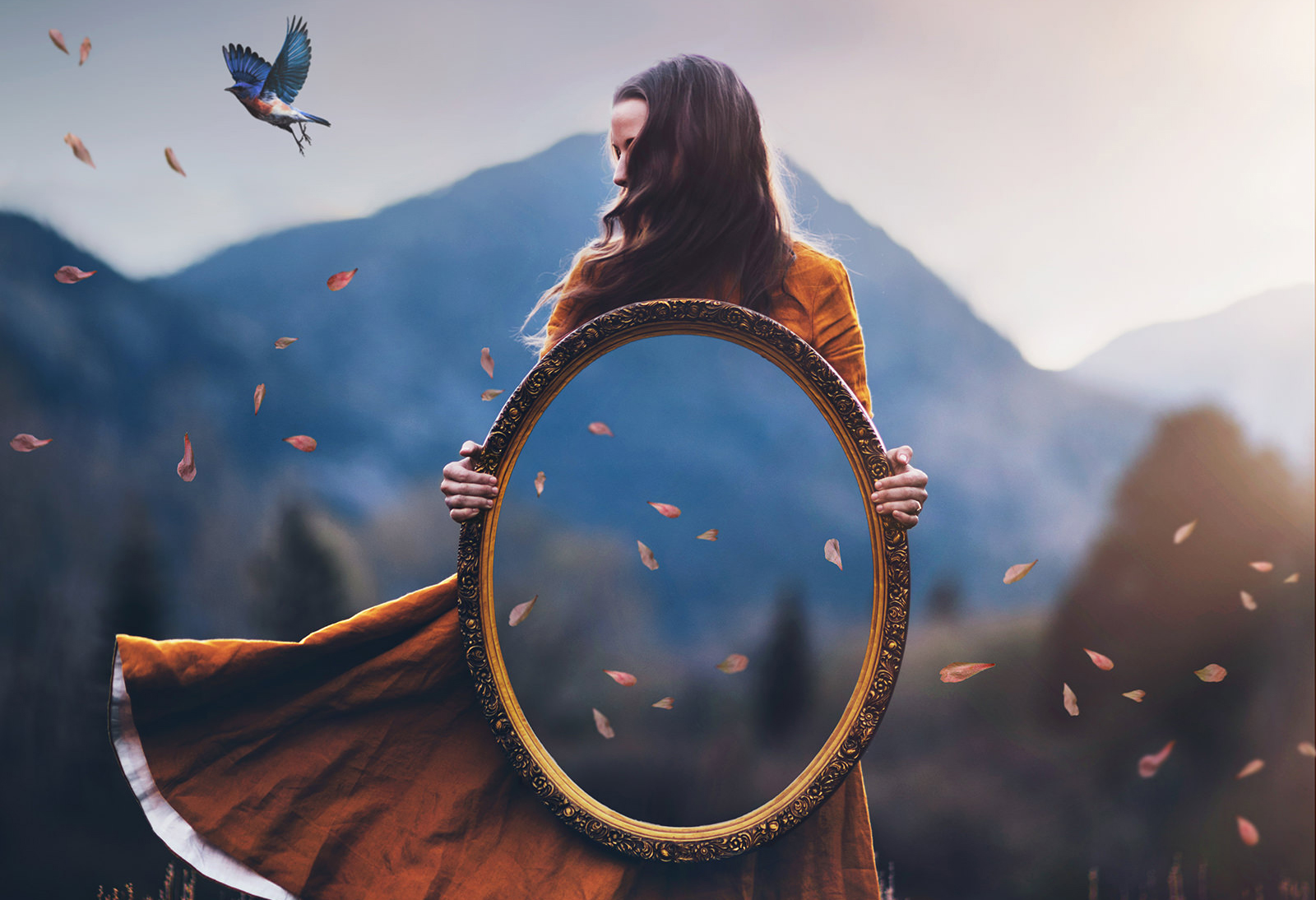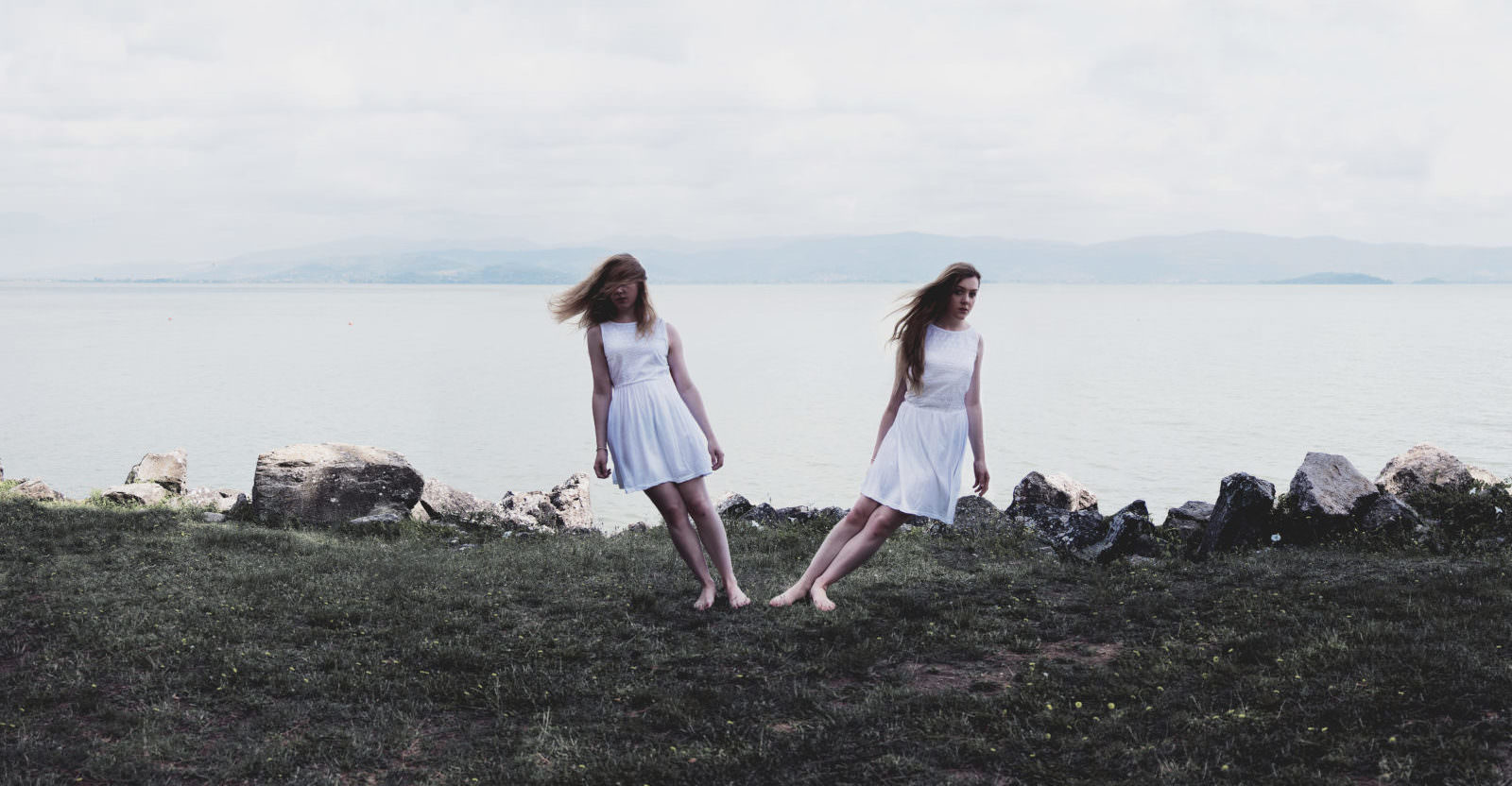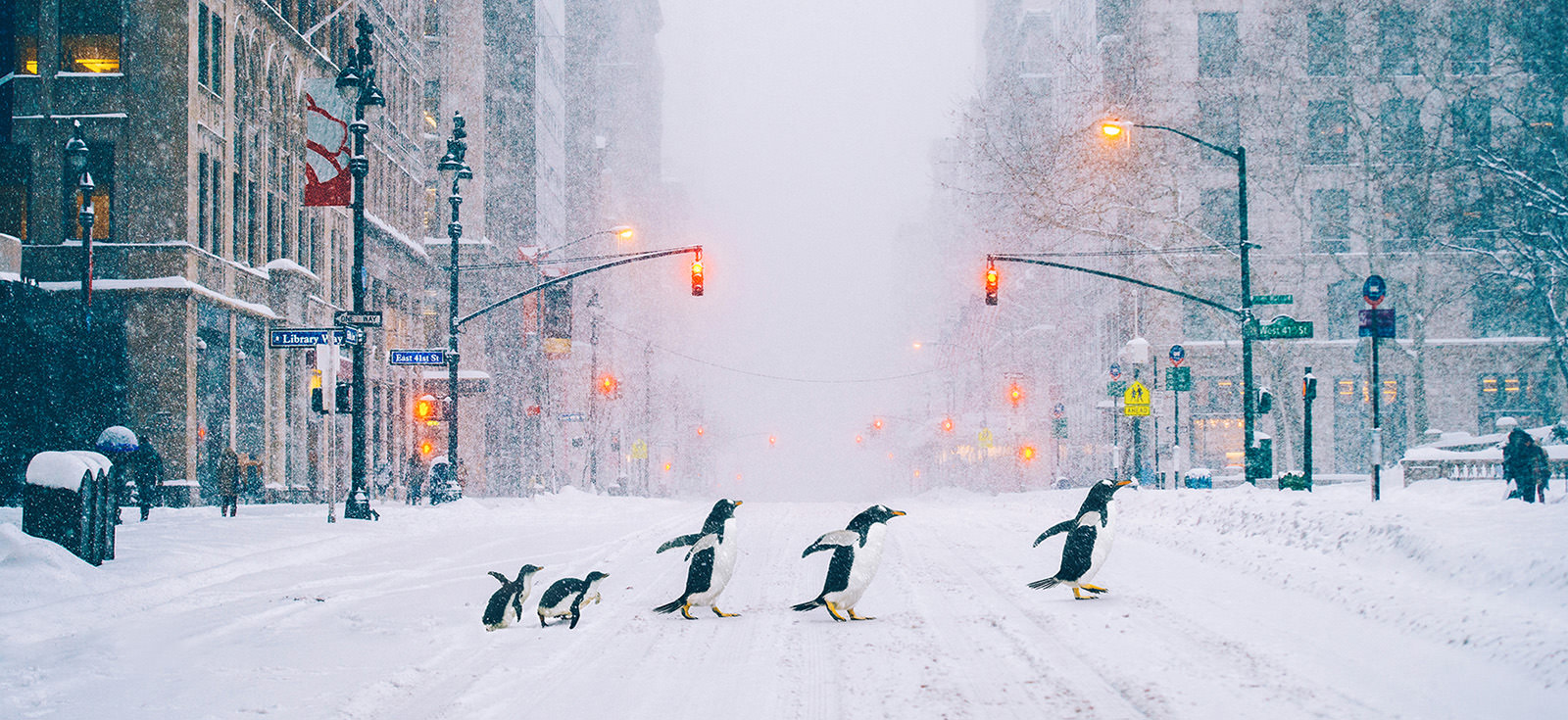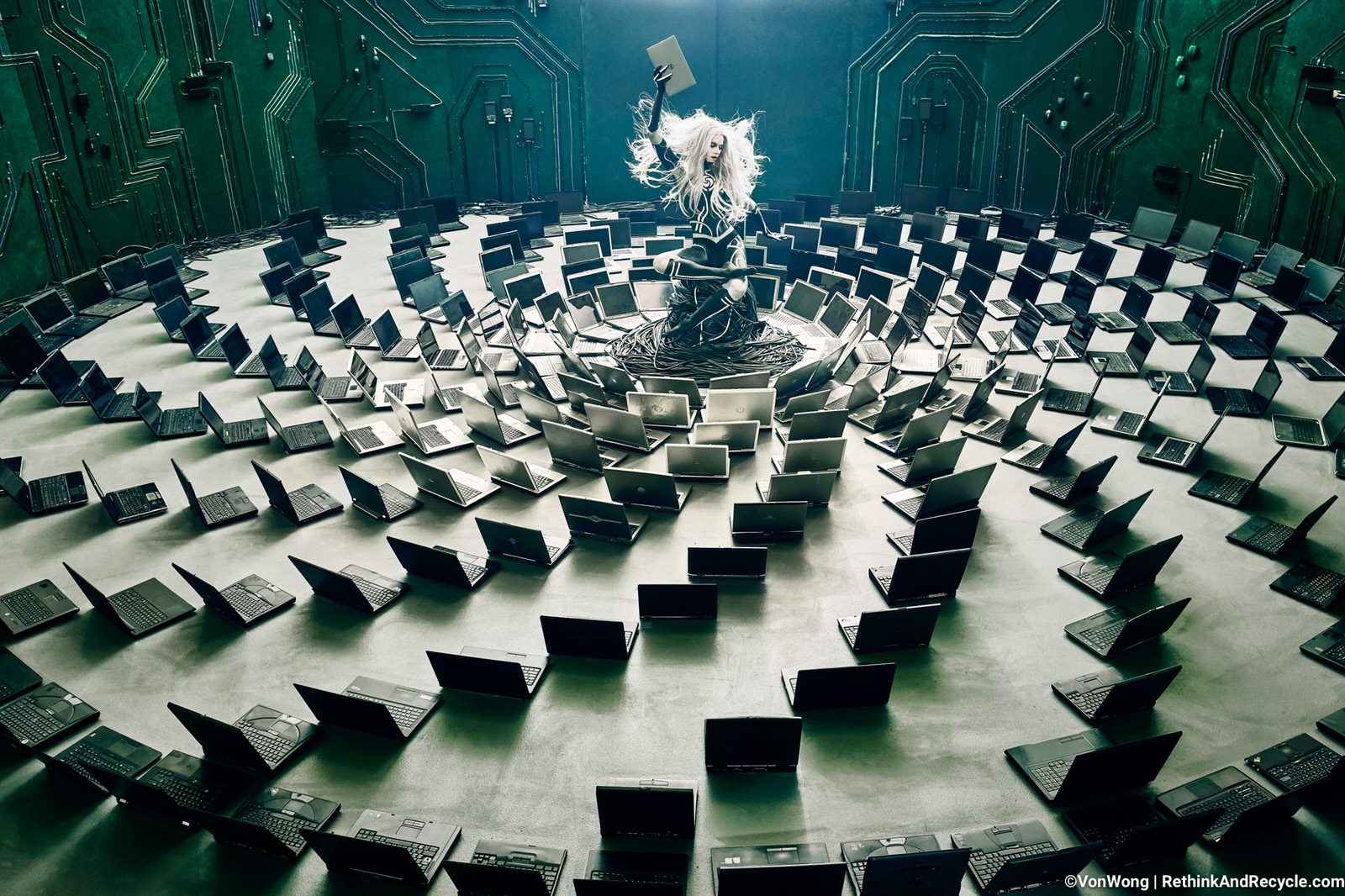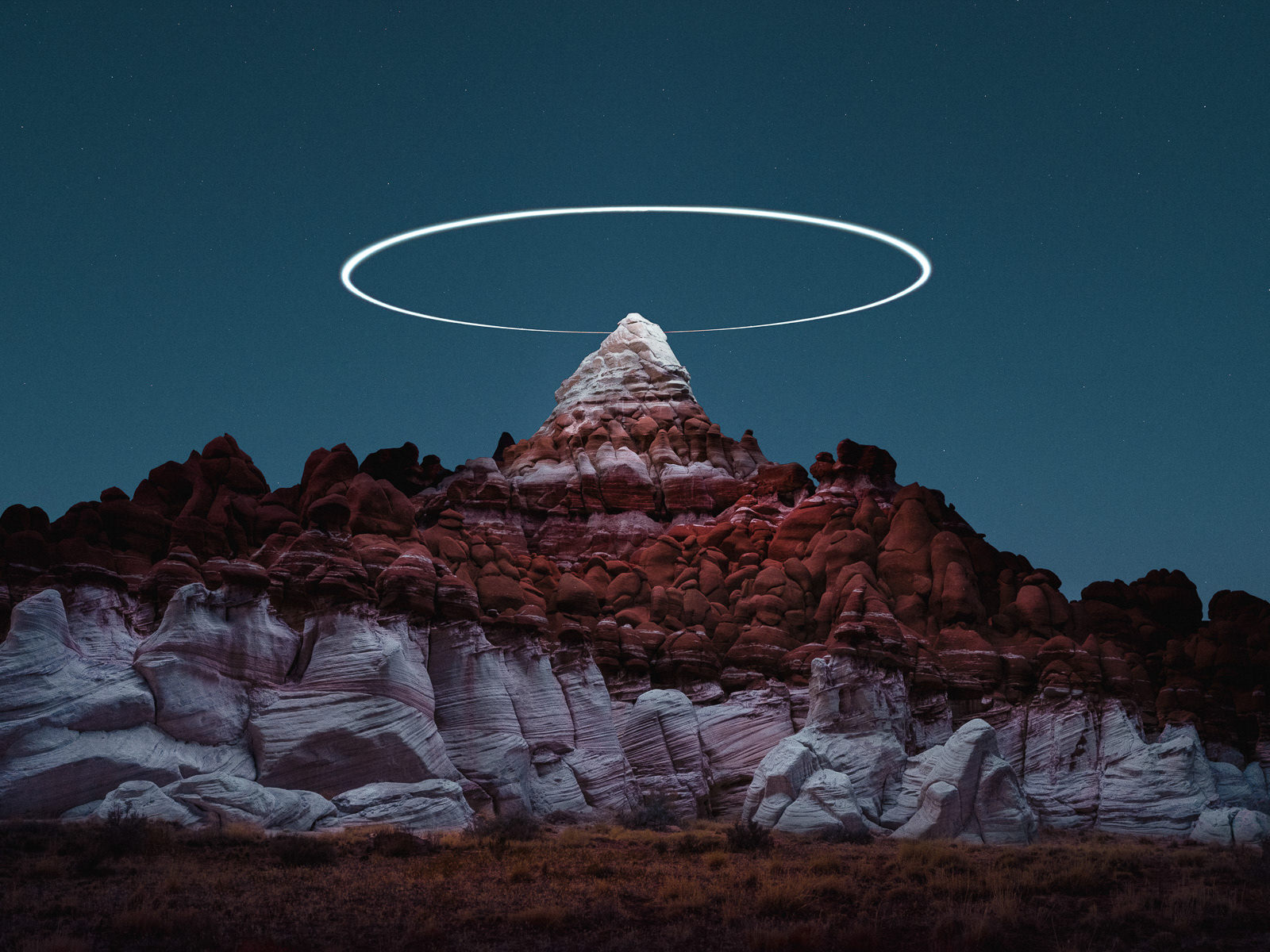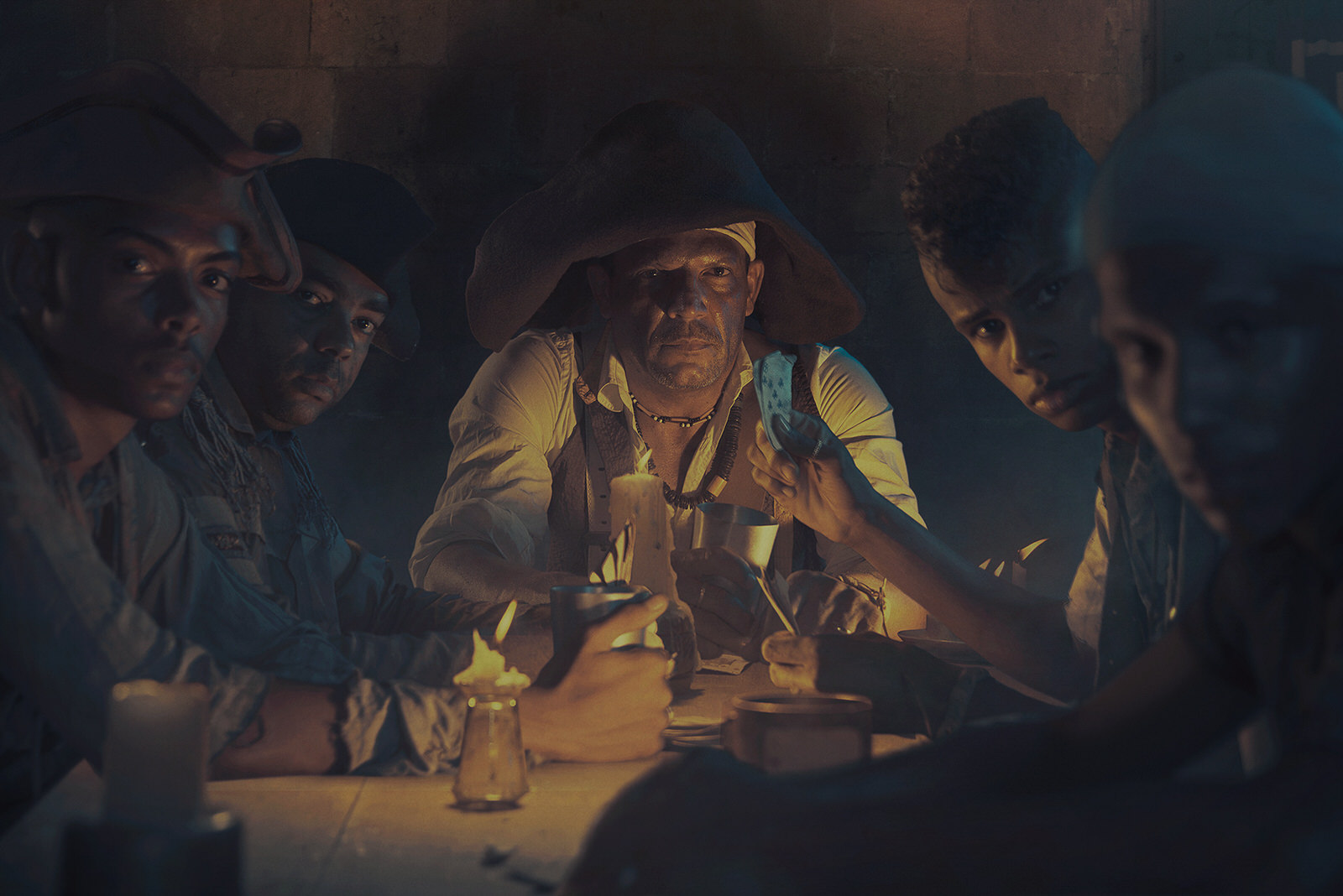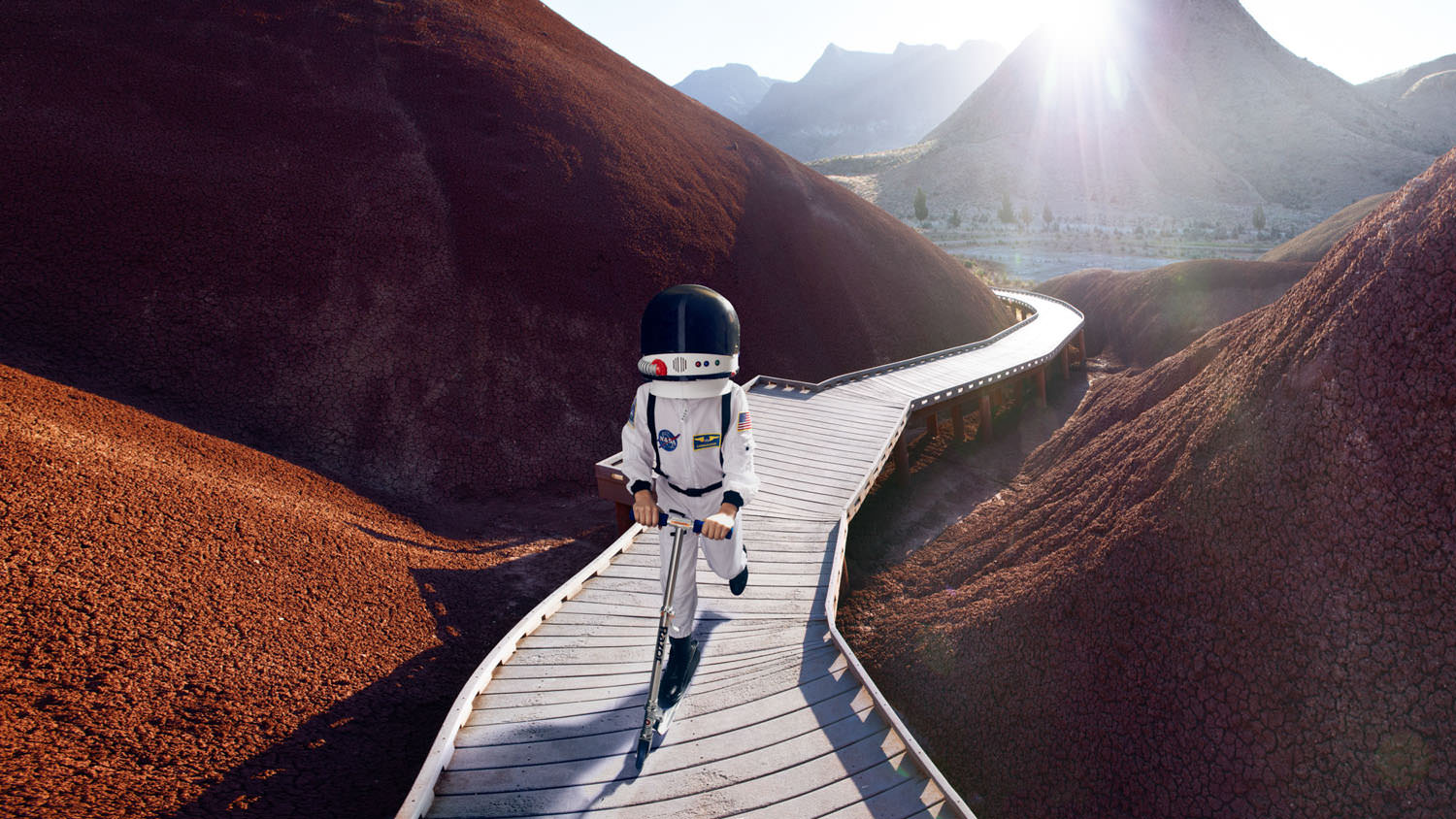
How to Pull Off High-Production, Professional Photoshoots on the Cheap with Kate Woodman
When cornered to define the particular genre of photography she covers, Kate Woodman defines it as cinematic conceptual photography.
Most of her paid commissions are currently in fashion and portraiture, but Kate hesitates to identify as a fashion photographer. She feels that, to be successful in fashion photography, you have to be completely passionate about fashion, its trends, and the designers who rule that kingdom. She doesn’t feel as interested in those things as she is in how the element of fashion serves as a detail in the broader context of a story.
You create so much personal work! How are you able to create so much so often while operating off a budget that is primarily coming out of your own pocket?
You have to get creative in this industry. That’s kind of the whole point of being a photographer, it’s being a creative problem solver. Your creativity can extend outside of just making an interesting photo. It can be sourcing cool locations on the cheap, or clothing, or being resourceful with your acquisition of props. I’ve found amazing locations and props on Craigslist, through friends or models, or I’ve even just shot guerrilla style. Making contacts and reaching out to people to lend a hand with whatever you need is essential – you never know who can connect you to some place or thing you thought inaccessible.
One shot of mine that people really like is this girl in a crazy zipper couture outfit and she is sitting in this purple parlor surrounded by taxidermy and she is on this big old school phone. It got a lot of positive response when I shopped that around, because it looks like it has really high production value. The designer was a friend of mine from Philly, who let us shoot with her stuff for free, and the location was this random taxidermy shop owned by a friend of hers in Philadelphia. I had one light and an hour to shoot there and the whole thing was free. You have to be willing and open to ask people for things. Understand that the worst you can get is a “no”.
Sometimes it is really challenging or impossible to bring a whole crew out to a location and schlep a bunch of gear out at the crack of dawn. Or sometimes it’s not in the budget to access a location or rent out a space. These are very real limitations, and part of the reason I started compositing. When it’s just you shooting backplates, great imagery becomes a lot more accessible because you’re able to focus on getting that perfect background without having to deal with the chaos that all the other parts bring to set.
Compositing also allows to you be a bit sneaky – I have occasionally used backplates from locations that wouldn’t allow a full crew to shoot there but does allow visitors to take “personal photos”. You’ve got to be careful you’re not using these images for commercial purposes because you run the risk of getting yourself into trouble, but for personal work, it’s a tried and true tactic for me.
What do you think makes a photograph interesting?
Storytelling. There has to be a visceral, emotional component to the image – I want to look at an image and wonder who that person is and what they are feeling. Some photographers can pull that out of a person in a simple portrait setup with an engaging subject and a plain backdrop. Usually, I need more elements in my scenes for it to feel compelling.
The environment a character is in plays a huge role in that storytelling process for me, and adds a lot of context to the shot. This is facilitated by the styling, to set the tone, and of course, lighting and color grading are also super important. The challenge is to find a way to make all of these components work harmoniously and authentically to support the storyline and/or character development and not overshadow them.
You have an incredibly coherent and defined style that seems to focus on color. Where did you pick that up from?
It’s funny, I didn’t really ever notice my proclivity towards the use of rich color until people started pointing it out. Color can be used as a powerful tool to evoke certain emotional responses when storytelling in an image and once I became conscious of this, my color decisions have become much more deliberate.
As to the origin of my interest in color, I have always drawn and painted (one of my degrees is in art history), but I guess my real appreciation for it manifested through interior design when my husband and I restored our 18th century farmhouse in Philadelphia. I spent an embarrassing amount of time agonizing over paint colors. I painted and repainted a lot – I think if I painted the hallway one more time to get that perfect shade of marigold, my husband might have killed me.
Through that process I also observed how color was affected by different qualities of light, how it made you feel, as well as how it could create the illusion of more or less space. These are definitely observations that I think have subconsciously worked their way into my photography process.
A major part of our job is to come up with solutions that fit within a given budget, but how do we learn that and get there?
I get it, I struggle with this too. There are definitely dream projects of mine that I would love to shoot right now, but are just prohibitively expensive. Luckily there is no shortage of other projects that can occupy my time. I keep a list of 50+ concepts that I want to shoot so if there is something on there I can’t get to right now, then I move on until I find one I can allocate the resources to complete.
I think you have to get really good at choosing your battles. There are concepts that you can make happen right now where you can create or find the elements creatively and make it look good, and those that you just have to have patience for.
This doesn’t just happen with personal work, it happens with clients as well. Sometimes this can be even more challenging because you’re still expected to meet certain visual expectations, despite budgetary constraints. Again, it circles back to the previous discussions about getting creative with your resources, asking connections for help, or potentially even adding compositing to your repertoire to allow for more creative and inexpensive problem solving.
You are sitting in a portfolio review and the client or agent is looking through your work right there in front of you, what is going on inside of your head?
There are two scenarios I see for a portfolio review. The first is more of an educational exercise, where you’re not necessarily looking to pitch to a specific client, but are looking more for feedback. In those scenarios, I want to know if they respond positively to my work, but also where they think it might be a good fit. I definitely have struggled with figuring out what genre my work best conforms to so hearing varying perspectives helps to open up avenues I may not have otherwise explored. It also helps to hear a reviewer’s perspective on market trends and who is doing what, which helps me target my personal work and stay sharp.
The other scenario is more of an actual client review scenario, where you’re trying to land work with a particular brand/client/agency. In these cases, I want to know if what I’m showing them fills any of their gaps, or, if not, what do I need to do to get my foot in the door.
In either case, portfolio reviews are some of the best ways to network. Even if you don’t have anything that connects with what that brand is working on right now, they may know someone who they think your work might match up with. I can’t tell you how many showings I’ve been in where my work didn’t necessarily fit that brand’s needs but they referred me to clients where it did. Portfolio reviews are really great, because you never actually know where they will lead.
What advice or encouragement would you have found most helpful when you were getting started out?
My first-year approach to marketing was the classic “spray and pray” approach. I sent out very impersonal templated emails with images to thousands upon thousands of inboxes. I followed up with print postcards and a round of cold-calls (after which I never followed up because I didn’t want to be a bother). I did all the ???right things”, managed to get a few showings, and I think I started to get on people’s radar, but it lead to approximately zero commercial jobs.
The thing I learned about that first year of marketing is that you can tick all the checkboxes in your photography marketing 101 handbook, but unless you establish some meaningful connections, you won’t be successful. We live in a world so saturated by imagery that even stand out work is quickly forgotten. Your approach has to be very customized, to show those brands work that is relevant to them in particular and that you are genuinely interested in their vision.
You’ve also got to get really creative and show that you’re more than just a photographer. You have to show them that you are innovative and will bring your own ideas to the table. The irony is that you basically have to become a creative director to be hired by a creative director.
And again, it can’t be reiterated enough that networking is crucial. It can be frustrating to have that job hinge on whether you know someone at that agency, but it’s the reality of the industry. And be patient!! Your skills will develop however fast you want them to when you put in the effort, but to make genuine connections is something that can’t be rushed.
What do you struggle with in photography?
Oh, plenty of things! I’d say one of my biggest struggles is being a bit of a crowd-pleaser. If I get a bunch of personalities on set that want something a particular way, I have a tendency to concede to that (this gets complicated when said personalities have differing views). Often, it is at the expense of my own creative vision.
It’s less of an issue in commercial work because it’s typically the art director and not me who is ultimately driving the final creative output. But for personal work, that balance between staying true to my own aesthetic/concepts and allowing creative freedom for my team can be precarious. I attended a course recently, and the instructor kept repeating that you need to be selfish in your personal work. It’s something that has stuck with me and I realize that I can afford to be a bit more selfish to ensure my vision is executed the way that I want.
In a somewhat similar vein, I also struggle with being somewhat soft spoken about my work – which is weird because I don’t know if I see it as a bad thing but it can be detrimental when it comes to putting myself out there and making my creative voice known. I hate the idea of being perceived as that “annoying” photographer who calls too often or talks too much about herself, and so if anything, I err on the side of too little communication–which I fear can be equally detrimental to landing clients.
Is there something inside of you that you feel needs to change or is it a part of the industry that needs to change? Is it internal or external?
That’s a good question. Probably a little of both? I’d like to believe that if you do good work and you put yourself out there and aren’t obnoxious, then you should be able to get hired. But I don’t see that playing out in reality. There are simply too many people in the industry that are not wired that way and probably won’t be changing. I have to find a way to stay true to my personality and make that work for me and not become someone else or force myself to become someone else. In the end that won’t work for me. I could fake it for a time, but it will eventually drive me nuts.
I think I need to realize that there is a balance and there are perfectly acceptable times to toot my own horn. I need to be able to confidently say, “I am the right person for this job.” I would say that I am confident in my ability to deliver amazing work and that I am confident I can help you achieve your vision. It’s just all that legwork required to get in front of people in the first place that can become a bit daunting. My solution to all of this, of course, was to get an agent, who keeps me accountable and forces me out of my marketing comfort zone!
How much of your business would you say is specifically photographing versus all those other tasks associated with running a business?
When it comes to actual paid shooting, I’d say my time allocation to that is maybe 10 percent if if I am being generous. The rest is a lot of planning, editing, administration, and marketing – lots of marketing. It sounds like a small number, but I personally really enjoy a lot of the pre- and post-production work, so it’s less discouraging than it sounds. This also doesn’t include shooting personal work, which I try to as often as possible. On average I test about twice a week, though that number decreases the more complex my concepts become (that good old quality over quantity approach).
Shooting personal work is really great for a number of reasons. First, I basically produce, art direct, and shoot all of my own work (I’ve even been known to style, location scout, and do hair in a pinch if I really have to), so it really immerses you into the whole process of executing a project. This becomes really valuable real world experience that is essential for a client project–but without all of the pressure. Two, it allows me to really push my own creative boundaries and to come up with a concept that hopefully hasn’t been executed before.
And of course, it’s great because you’re building relationships with your teammates and developing that trust that they can execute your vision. Most importantly though, it’s an opportunity to learn things – technical things, but also things like what drives you, how do you work with people, how can you improve your process, and sometimes even what not to do.
You can view more of Kate’s work on her website or Instagram.









